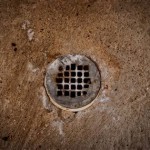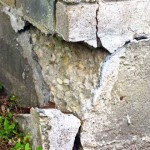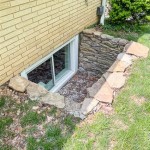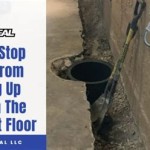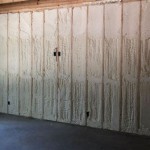How To Seal the Gap Between Basement Floor and Wall
A gap between the basement floor and wall is a common problem that can lead to various issues, including moisture intrusion, pest infestations, and drafts. Sealing this gap effectively is crucial for maintaining a healthy and comfortable basement environment. This article will guide you through the process of sealing the gap between your basement floor and wall, providing detailed steps and recommendations.
1. Prepare the Area
Before beginning the sealing process, it's essential to prepare the area thoroughly. This involves:
- Cleaning the Gap: Use a vacuum cleaner and a stiff-bristled brush to remove dirt, dust, and debris from the gap. This ensures a clean surface for adhesion.
- Drying the Surface: Allow the area to dry completely. Moisture can interfere with the sealant's effectiveness.
- Identifying the Cause: Determine the reason for the gap. If it's due to settling, consider addressing the foundation issue before sealing.
2. Choose the Right Sealant
The type of sealant you choose will depend on the size and nature of the gap, as well as the specific conditions in your basement. Here are some popular options:
- Caulk: A versatile and affordable option for smaller gaps. Select a caulk specifically designed for basement applications, such as polyurethane or silicone caulk.
- Backer Rod: Used alongside caulk to fill larger gaps and create a consistent depth. It's made from foam or rubber.
- Expansion Foam: Offers excellent sealing for larger gaps and uneven surfaces. It expands to fill voids and forms a durable barrier.
- Concrete Patching Compound: Suitable for larger gaps or cracks in the concrete. It sets hard and provides a durable seal.
3. Apply the Sealant
Once you've chosen the appropriate sealant, follow these steps for application:
- Apply Backer Rod (if necessary): If you're using backer rod, insert it into the gap to create a consistent depth before applying caulk or foam.
- Apply Caulk or Foam: Apply the sealant in a smooth, continuous bead along the gap. Use a caulk gun for caulk and a foam gun for expansion foam.
- Smooth and Finish: After applying caulk, smooth it with a damp finger or a caulk tool. For expansion foam, trim any excess foam once it has cured.
- Apply Concrete Patching Compound (if necessary): For larger gaps or cracks, apply the patching compound according to the manufacturer's instructions.
4. Allow the Sealant to Cure
After applying the sealant, allow it to cure completely. The curing time varies depending on the type of sealant used. Refer to the manufacturer's instructions for specific curing times. Avoid exposing the sealant to excessive moisture or high temperatures during the curing process.
5. Inspect and Re-apply as Needed
Regularly inspect the sealed area for any signs of cracking, gaps, or deterioration. If necessary, re-apply sealant to maintain a continuous barrier against moisture and pests. This proactive approach will ensure the long-term effectiveness of the sealant and protect your basement from potential problems.
Sealing the gap between your basement floor and wall is a simple yet essential step in maintaining a healthy and comfortable basement environment. By following these instructions and selecting the right sealant, you can effectively prevent moisture intrusion, pests, and drafts, ensuring a drier and more enjoyable basement space.

Don T Seal The Gap Between Your Basement Floor Wall Everdry Toledo

Don T Seal The Gap Between Your Basement Floor Wall Everdry Toledo

Why You Can T Seal The Gap Between A Basement Floor And Wall

Gap Between Concrete Slab And Foundation Doityourself Com Community Forums

Sealing The Gap Between Your Garage Floor And Wall

How To Caulk A Basement Slab Foundation Wall Joint Youtube

Gap Between Basement Floor And Wall R Homeimprovement

Drywall Gap At Concrete Basement Floor Caulk Or Other Greenbuildingadvisor

Do I Need To Fill This Gap Between The Foundation And Patio Hometalk

Ayers Basement Systems Waterproofing Photo Album Sentry Seal Saves A Frankfort Mi

